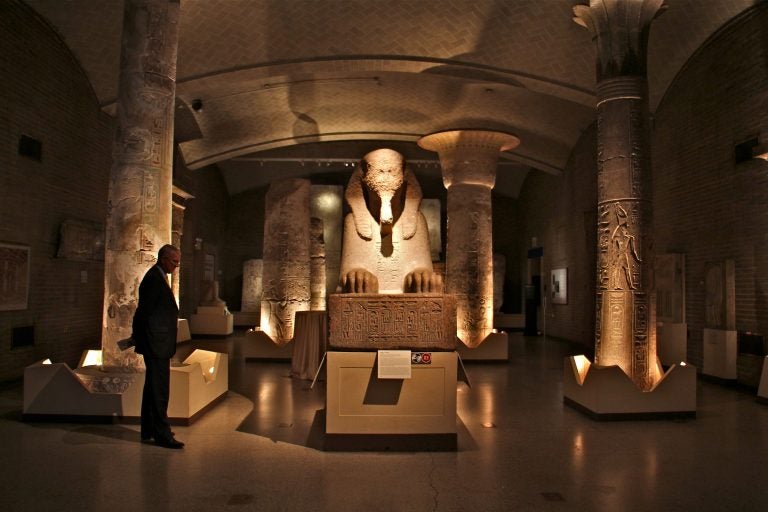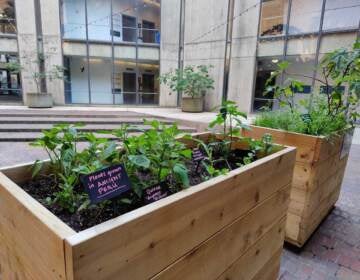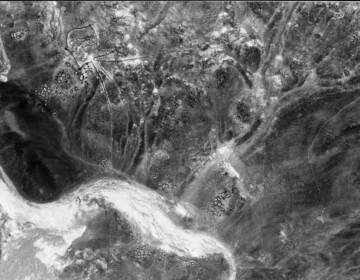Penn Museum breaks ground for long-overdue overhaul
The 118-year-old museum at the University of Pennsylvania houses millions of archaeological and anthropological artifacts from around the world.

The Penn Museum is launching a major renovation that promises to "transform the visitor experience." (Emma Lee/WHYY)
The University of Pennsylvania’s Museum of Archaeology and Anthropology has launched a major overhaul of its building, expected to cost tens of millions of dollars and take years to complete.
The century-old museum wants to make the building easier on its visitors — and its artifacts.
The interior transformation will take place in phases, closing and reopening sections of the building as work progresses. The first phase will focus on the Harrison Auditorium — an 800-seat rotunda made of sand-colored brick built in 1915 — and its surrounding galleries of Middle Eastern and Latin American artifacts.
The $21 million renovation will open the auditorium to the outside. “The revitalized entrance directly to the street will bring university events into the finest auditorium on campus,” said architect Richard Gluckman of Gluckman Tang.
The museum is actually a network of seven structures, built and interconnected over the course of a century. It can be confusing to navigate, hard to find a bathroom, and most of it has never had air conditioning.
Gluckman has designed a central core running through the building’s three floors, tying together the Asian, Egyptian, and Middle Eastern sections. Unused staircases will be revealed, with new windows punched into the brick walls.
In the basement below the auditorium will hum the heart of a massive HVAC system.
“The interior will be dramatically redesigned with new lifts, new stairwells, new washrooms, new ways to walk around the building,” said museum director Julian Siggers. “The air conditioning is profound. If you’ve ever been here in the summer, it can be rather challenging.”
Among the major structural changes will be a reinforced floor of the upper Egyptian room, in order to handle the weight of several stone columns now housed in the lower Egyptian room. The columns, discovered in the 1920s and each weighing about 15 tons, were once the architectural elements of a pharaoh’s palace.
They are now displayed in pieces, because the room where they are housed is not tall enough for them to be stacked to their full, original height. In the upper room, with a ceiling almost twice as high, the pieces can be reassembled to form the palace they once were.
The Penn Museum is a working research organization, deeply involved with ongoing archaeological expeditions around the world, including forensic programs to track cultural artifacts looted during current military actions in the Middle East.
“We’ve reached a point where there’s a real appetite to harness what this museum is — an act of generosity that tells the human story,” said Siggers. “No matter where you come from, this museum has a part of your story in it. That’s the story we want to tell.”
The first room to reopen will be the Middle Eastern gallery. One of the first projects of the Penn Museum undertook when it formed in 1887 was to send an archaeological expedition to the ancient Sumerian city of Nippur, in what is now Iraq. Since then it has collected more than 100,000 objects from the Middle East.
Part of the capital campaign to fund the reconstruction of the buildings will also endow research, undergraduate education, and archaeological analysis, Siggers said. The physical transformation of the building, he said, will allow museum faculty to better store, study, and exhibit the museum’s massive collection of artifacts, including 250,000 bones.
“It’s not just a place to discover skeletons we want to take out of the closet,” said university president Amy Gutman. “It is to show what those skeleton meant in human history, and what our future may have in store because of our history.”
WHYY is your source for fact-based, in-depth journalism and information. As a nonprofit organization, we rely on financial support from readers like you. Please give today.





